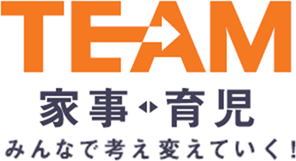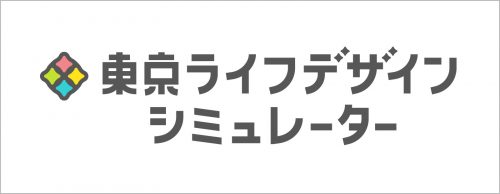Coca-Cola Bottlers Japan Co., Ltd. respects the individuality of each employee and actively promotes diversity and inclusion in order to realize its mission of “creating value by delivering happy moments for everyone.
We interviewed Mr. Kuroda about the company’s efforts to promote men’s participation in housework and childcare at a company that promotes a flexible work style that is not restricted by working place or time, such as the rapid shift to telecommuting at Corona Disaster Relief, the introduction of Super Flex, which has no core working hours, and the promotion of going directly to the sales division to go home.
Those who responded to our interview

Executive Officer, General Manager, Human Resources & General Affairs Division
Shigehiko Uemura

General Manager, Strategic Promotion Department, Human Resources & General Affairs Division
Risa Kinoshita
Motivation for Initiatives
Coca-Cola Bottlers Japan was created in April 2017 through the integration of 12 bottler companies located throughout Japan. In proceeding with the integration, in order to unify the mindset of approximately 16,000 employees who had previously worked for different companies, President Karin Dragan’s idea that “the old way of doing things is not an option” has led to speedy reforms in the way we work.
For example, we have introduced the “Sawayaka Dress Code,” which allows casual clothing such as jeans and sneakers, and we have introduced “san,” rather than titles, to improve workplace openness, We have been striving to create a workplace environment in which employees can easily demonstrate their abilities by reforming their awareness in an easy-to-understand manner.
Realizing a work-life balance will enable employees who have time constraints due to childcare or nursing care to maximize their abilities. In order to create such an environment, we have set three priority items: “Message from the top management,” “Awareness of the system,” and “Fostering a corporate culture.” We regularly conduct internal surveys to gather employees’ voices and catch up with their requests as needed, and are promoting efforts to address these issues.
Raising awareness that leads to a “gut feeling” among managers
By realizing a work-life balance for employees, for example, families with children can enrich their lives by having both genders participate in housework and childcare, and for companies, it can also create a synergistic effect of increased productivity. However, there is an unconscious bias (a distortion or bias in the way one sees or perceives things that one is not aware of; an unconscious bias), especially among those in management and above, that men work outside the home and women stay at home to raise their children. Unconscious bias is a distortion or bias in the way one sees or perceives things that one is unaware of. Unconscious bias is difficult to be aware of by oneself, and the individual is not aware that there is a distortion or bias, so in order to change their awareness, it is essential to make them understand why they need to change their awareness, and how participating in housework and childcare will benefit the company, regardless of gender. It is essential to make them understand why they need to change their mindset and how participating in housework and childcare will benefit the company.
Therefore, we provide training on Unconscious Bias for managers and above. As a result, we have received many positive comments, such as, “Through the training, I was given an opportunity to think about creating a comfortable working environment for diverse employees,” and “I learned about the problems faced by employees in different positions from myself, which broadened my perspective.
Furthermore, in order to promote direct communication, which is effective in raising awareness, twice a year the president and other executives hold town hall meetings at 10 locations in all sales areas (Tokyo, 2 prefectures, 35 prefectures), where they deliver messages to 1,800 managers and answer their questions. Here, too, top management communicates the importance of men’s participation in housework and childcare as a management policy.
Mind Change Breaking the “mental barrier” of young male employees
Before efforts to eliminate the unconscious bias became widespread, young male employees had a mental barrier: “There is a system, but is it really OK to take it? Before efforts to eliminate the unconscious bias became widespread, young male employees had a mental barrier: “There is a system, but can I really take it? They wondered if they would be inconvenienced if they were unreachable during maternity leave, if they would be able to coordinate their work, and whether they could ask clients to adjust their schedules to accommodate maternity leave. However, the awareness of managers has changed as a result of the Unconscious Bias training program, and as awareness of the system has expanded, employees around them have come to understand the system, making it easier to use the maternity leave and various other systems.
Papa Apron.
The key to fostering a culture that encourages male employees to participate in childcare and take parental leave is “awareness of childcare participation by men themselves,” “understanding and cooperation from co-workers,” and “encouragement from superiors. This is why we launched the “Papa Apron” system.
The “Papa Apron” is a simple gesture in which the supervisor of a male employee who has a newborn child hands an apron of an original design to the male employee in question, along with a message about his participation in childcare, in plain view of his colleagues.
Male employees who receive a “Dad Apron” will have an increased awareness of their participation in childcare. In addition, the whole workplace will become more aware of the fact that “he has a new baby” and “I will cooperate with him so that he can work on childcare”, which will help each employee to better understand the situation.
In addition, it helps to promote a change of mindset among supervisors. You can’t just hand your subordinates an apron without telling them what to do with it. You cannot just hand out an apron without telling your subordinates, “Make sure you take leave for childcare and participate in childcare. This apron is for that purpose. The boss must explain that this is what the apron is for. Since his colleagues are also listening, the supervisor must be able to convey the message firmly. This one step of “thinking about it” is helping to change the mindset. This initiative has led to a positive mindset change throughout the workplace, and more than 300 copies have been distributed so far.
Although it is an analog approach, it is highly effective in raising awareness in the workplace and is probably relatively easy for any company to implement.


Support Book for Utilization of Systems for Balancing Work and Childcare
We have various systems in place to support the continuation of employment in the event of childcare, nursing care, or illness. However, some employees have said that they do not know how to utilize these systems even if they exist, so we have created a support book to help employees utilize these systems. In addition to information on when the systems can be utilized, we also provide reports on the experiences of senior fathers who have taken parental leave through our in-house SNS. We plan to continue updating the book to make it easier to use based on employee needs. We would also like to consider differences in the way the system is utilized by different departments.
 We produce support books on childbirth and childcare in both Japanese and English.
We produce support books on childbirth and childcare in both Japanese and English.
Telecommuting System and Flexible Work Styles
We had been developing a telecommuting and telework environment even before the spread of the new coronavirus, and had been implementing spot telework during the intensive summer period in conjunction with the Tokyo Metropolitan Government’s shortened hours project since 2019. Then, about six months before the Corona virus, the president initiated the idea of “Let’s do it every month because it is a good initiative. As a result, when all employees were required to work from home in principle, which was undeniably necessary to prevent the spread of infection, the transition was smooth. By quickly adopting tools and systems, employees were able to cope with telecommuting, and everyone is doing their work well. In addition, many positive aspects of telecommuting have been reported from the perspective of men’s participation in housework and childcare, such as the ability to share the responsibility of transporting children to and from work.
Employee Reaction
We conducted a survey of male employees who have taken parental leave in the past, and received the following comments from employees.
I am able to work from home to help with childcare (morning milk, bathing, babysitting while shopping, etc.).
I am not particularly dissatisfied with the leave because we have created an environment that allows employees to work from home so that they can continue their work while taking care of their household chores, and because of the support of my supervisor and coworkers. I feel that the support of others and daily communication are more important than whether or not maternity leave is taken.
My supervisor explained to me about the male maternity leave system and gave me advice on how to actively utilize the system.
Overall, they have more time to themselves, which is a tailwind for the change in work styles. When each couple works from home, they are sharing work and household chores by staggering their hours, even without taking maternity leave.
Future Outlook
Since the integration in 2018, we have been working with speed to dispel various prejudices and raise awareness. However, with approximately 16,000 employees, it is also true that there are still some workplaces where awareness reform has not fully penetrated. Since not all workplaces have employees who would be affected by initiatives such as the “Papa Apron” that lead to a change in awareness throughout the workplace, our future challenge is how to effectively deliver the message. We will continue to incorporate good initiatives from other companies and respond swiftly to them.
Since our mission is to “create value by delivering happy moments for everyone,” we should be happy not only for our customers but also for ourselves. We would like to work as a company to design a system and create time for childcare, not only during maternity leave, but also on a daily basis. As a result, I hope to contribute to men’s participation in childcare and housework. How strongly management will promote this policy and how clearly it is articulated will increasingly test its seriousness. We will continue to consider measures to ensure that all employees are happy and promote them in a holistic manner.
Click here to read about Coca-Cola Bottlers Japan K.K.’s diversity and inclusion initiatives.
https://www.ccbji.co.jp/recruit/newgraduates/workstyle/02/









